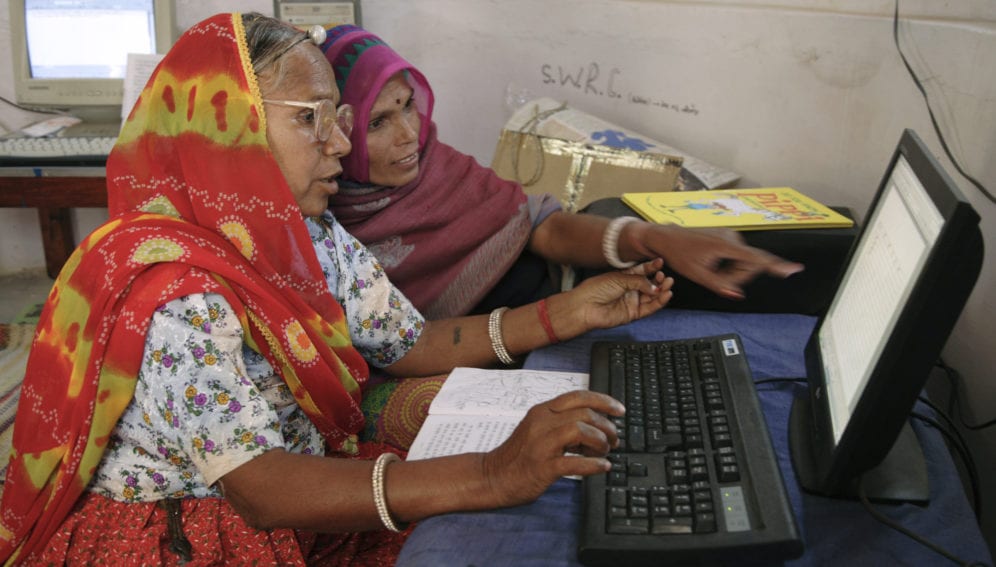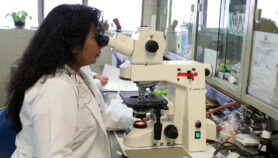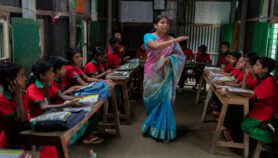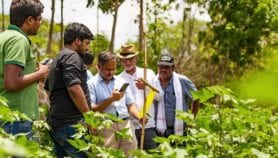Send to a friend
The details you provide on this page will not be used to send unsolicited email, and will not be sold to a 3rd party. See privacy policy.
South Asia’s digital technology drive is grating against policy, regulatory and ethical issues, says Nalaka Gunawardene.
As governments and citizens use more information and communication technologies (ICTs), a social science perspective and human rights framework could help limit room for aggravating social disparities and income inequalities.
Any technology’s potential for misuse — and the prospect of unintended consequences — is not an argument against its adoption. Instead, the best response is to position technological solutions in the political economy of the problems they seek to solve.
These considerations have not always been taken into account by policy makers, technical experts or entrepreneurs when setting their priorities. That explains why some technological ‘quick fixes’ have failed to resolve deep rooted development problems.
Cheaper and more advanced technology have rendered some earlier solutions obsolete. For example, rural tele-centres are less relevant today due to the ubiquitous mobile phones providing most services at a personalised level.
Indeed, the mobile phone best typifies the transformative nature of ICTs. Economist Jeffrey Sachs, who heads the Earth Institute at Columbia University in the United States, has called the mobile phone “the single most transformative technology for development". [1]
ICT for Development 2.0
The spread of networked smartphones is now ushering in the next wave of innovation and social change. Already, South Asians connect to the web via smartphones more than through any other device.
Web access itself is still limited in South Asia: only 19 per cent of the region’s 1.7 billion people going online by end 2014, which was well behind the rates for East Asia (51 per cent) and Southeast Asia (33 per cent). [2]
Networked economies and information societies benefit not just direct users of ICTs, but indirectly many non-users as well. Thus, while working to fill gaps in basic access, it is not too soon to address post-connectivity challenges. These include content localisation, digital inclusion and privacy protection.
By now, development debates have evolved from an earlier over-reliance on technology and government-driven solutions to a more nuanced approach. ICTs’ potential is increasingly seen without either demonising or idolising them.
Richard Heeks, a professor of development informatics at the University of Manchester, sees this as the second phase of ICT for development (ICT4D). If the earlier phase saw ICTs as a tool for development, he says, the second phase sees them as the platform for development. [3]
The mobile-driven new phase involves the poor as more than mere consumers at the ‘bottom of the pyramid’. Heeks has suggested three overarching questions for this phase: How can the poor be producers of digital content and services? How can they create new incomes and jobs through ICTs? And how can we recognise and scale the ICT-based innovations they produce?
Context and caution
Meanwhile, as digital tools and services become pervasive, they can either enhance or inhibit the free flow of information and freedom of expression. The very technologies that can liberate societies can sometimes strengthen existing power structures. Hence the great value of context and caution.
Laurent Elder, programme leader for information and networks at Canada’s International Development Research Centre (IDRC), has assessed new opportunities and threats in the networked societies emerging across the developing world.
“Although changes brought on by a networked society can open up opportunities for development, they might also lead to certain development problems,” he says in an epilogue to a recent book, Connecting ICTs to Development: The IDRC Experience. [4]
IDRC is well positioned to survey this sector. For decades, it has been a funder and facilitator of action research on ICT4D. The book distils 15 years of research findings across, and extrapolates to the next decade.
In many developing countries, Elder notes, women are under-represented in the production and consumption of digital products. “Moreover, power, gendered and social relationships within societies are often replicated and reflected in the virtual world, which could create new forms of exclusion.”
Unintended consequences
A good example of such unintended consequences is provided by Bhoomi, a programme that digitised some 20 million handwritten land records in the Indian state of Karnataka beginning in 2002. Under this, the much-revised and often disputed land records maintained by thousands of bureaucrats were transferred to a computerised database. Afterwards, the paper documents were declared invalid. [5]
At first, it seemed like an innovative e-governance initiative meant to curb bureaucracy and corruption. But things didn’t go according to plan.
Solomon Benjamin, a researcher on city economy, land, politics and poverty, has critiqued the Bhoomi programme for failing to address entrenched social disparities.
In a 2007 paper co-written with three others, he noted, “First the digitisation of land records led to increased corruption, much more bribes and substantially increased time taken for land transactions. At another level, it facilitated very large players in the land markets to capture vast quantities of land at a time when Bangalore experiences a boom in the land market. These consequences have come about via the centralisation of both land records and management away from the village panchayat to the district level.” [6]
When e-governance projects intervene in land issues, he says, the political economy of land markets — rather than techno-managerial features of the project — can shape outcomes.
In recent years, India’s unique identification number project (Aadhaar) has also been criticised by privacy activists for its inadequate safeguards. [7] Considered to be the world's largest national identification number project, it aims to collect biometric and demographic data of all residents, store them in a centralised database and issue a 12-digit unique number. [8]
Surveillance state?
Science fiction writers from George Orwell (author of ‘1984’) to Philip K Dick have long cautioned against authoritarian governments – and even democratic ones – using advanced technologies for near-total surveillance over their people.
Is this inevitable, or can competing interests be balanced without compromising individual rights?
In his futuristic epilogue, Laurent Elder acknowledges how authoritarian states are already exploiting the benefits of ICTs to consolidate their positions of power. Censorship is rampant in cyberspace, he says, and extends far beyond “the great firewall of China”.
He also mentions the greater prevalence of social media as well as rising use of video surveillance, biometric identity scanners or radio frequency identification (RFID) tags – all of which adds to concerns about “the enhanced surveillance capabilities of the state or corporations”. [4]
Aadhaar, for example, is meant to ensure that poverty support actually goes to the intended people and without being siphoned away. But centralised databases can be misused, especially in situations of ethnic violence or religious conflicts.
The digital revolution is irreversible. We need right policies and regulations to optimise benefits and contain possible misuses.
Nalaka Gunawardene is a Colombo-based science writer, blogger and development communication consultant. The views in this column are his own.
This article has been produced by SciDev.Net's South Asia desk.
References
[1] Cell phones empower South Asia’s poor. By Nalaka Gunawardene. SciDev.Net 26 June 2014.
[2] There are now 3 billion Internet users worldwide in 2015. Mobile Industry Review, 26 January 2015.
[3] The ICT4D 2.0 Manifesto: Where Next for ICTs and International Development? Richard Heeks. Institute for Development Policy and Management University of Manchester, UK. 2009.
[4] Connecting ICTs to Development: The IDRC Experience. Edited by Laurent Elder, Heloise Emdon, Richard Fuchs and Ben Petrazzini. Anthem Press, 2013.
[5] Bhoomi programme official website.
[6] Benjamin, S. et al. 2007. “Bhoomi: ‘E-Governance’ or an Anti-politics Machine Necessary to Globalize Bangalore?” CASUM-m working paper.
[7] Analysing the Right to Privacy and Dignity with Respect to the UID Centre for Internet and Society. 26 January 2011.
[8] Unique Identification Authority of India. Official website.














